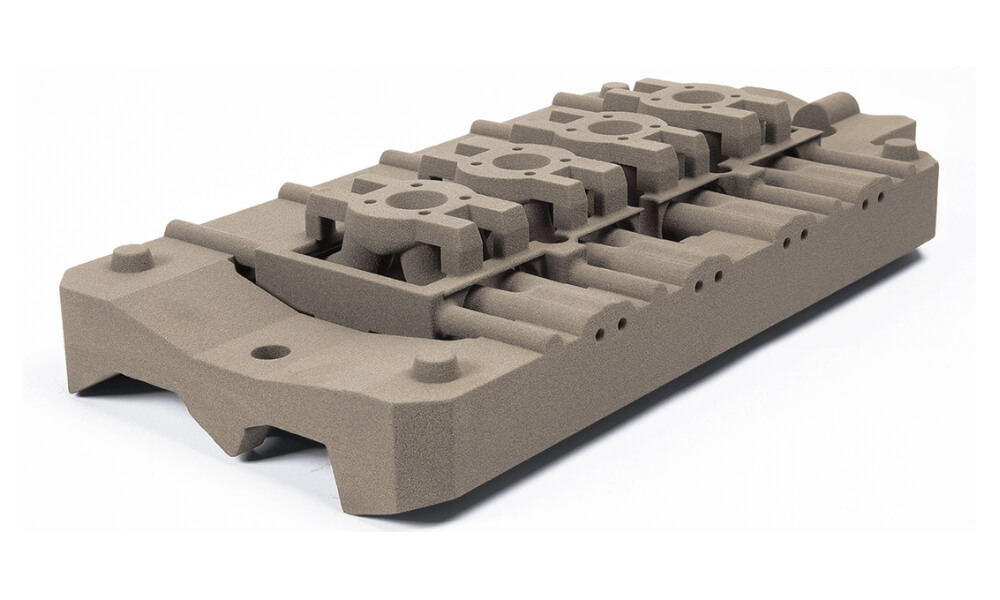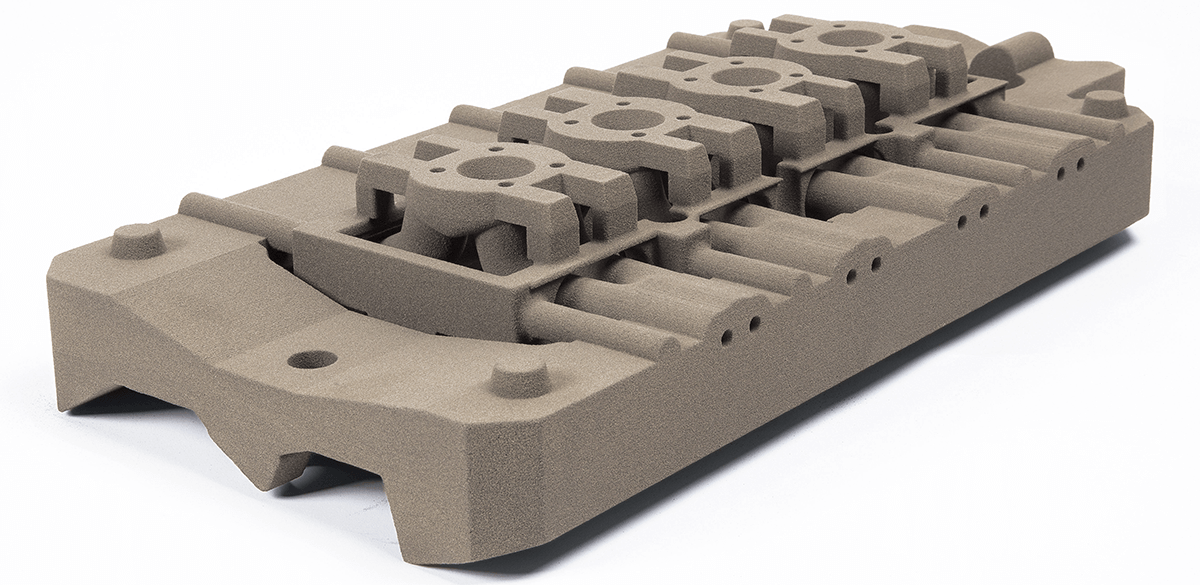Is a sand 3D printer the future of Additive Manufacturing?
Posted By Kat Plewa on Jul 17, 2019 | 0 comments
You might be surprised, but sand 3D printers go back to the late ‘90s! Generis and MIT are responsible for this huge development. But how exactly does this technology work? At what stage is it after 20 years of research and improvements? Today, we will focus on the innovations of sand 3D printers! Are you ready?
How does a sand 3D printer work?
Sand 3D printer, like all other printers, works with layers. It uses sand alike materials such as ceramics, metal particles and also silica sand. The technology used for those machines is called Binder Jetting and is widely used with different materials, for example, Stainless Steel 316.
Binder Jetting printers spread a layer of the material and then bind it with an agent, which solidifies the particles. A layer for sand 3D printer is 140-200 micrometers. When it comes to sand 3D printers, they do not require heat to produce parts. This is very important as it enables high volume 3D models to be manufactured.
There is no additional support needed for your parts to be 3D printed with a sand printer, which is a great advantage. Once your object is created layer by layer, the material surrounding it, not affected by the agent, is removed. Post-processing options are also available, for instance, binder removal, additional cleaning or impregnating for better strength properties.
Sand 3D printers are already commercially available and they can reach some pretty impressive values! In terms of the build volume, the pars can be up to 4 x 2 x 1 m, and at the same time have a really thin layer thickness (0.3 mm) which results in great quality. Another important aspect of any 3D printers is resolution and sand 3D printers keep up with the latest technology innovations, providing you with 600 DPI (dots per inch).
Why is the development of 3D sand printing important?
https://3dprintingindustry.com/news/voxeljet-phenolic-direct-binding-sand-printing-ceramic-37109/
The main benefits of sand 3D printing are a large volume and small material waste. Leftover material which is not bound can easily be reused. The downside is that the parts are not very strong compared to metal 3D printing for example. However, sand 3D printer doesn’t need additional support and those advantages might be crucial for one industry.
The casting processes are an old and commonly used method to produce parts in various industries. From automotive to aerospace, casting has been improving the production process for ages. It is not the easiest manufacturing method though. The master model around which the mold is created has to be absolutely perfect. Also, the material used for the master model is important, wax can be easily pushed out by metal, but wood or clay models have to be removed before casting processes.
Another problem during conventional production is that craftsmen preparing the master model need to consider and predict a lot of conditions that the model will be exposed to, such as shrinkage, solidifying in the model, flow, or reactions with metal. Learn more about Metal Casting vs Metal 3D printing.
Sand 3D printers can be just the perfect solution for that. They can revolutionize the casting industry actually. How? Thanks to sand 3D printers we might not need master models anymore! We could 3D print models straight away instead of creating them around master models.
With the possibility for such large build volume and the capability to produce complex shapes without supports, Additive Manufacturing opens totally new possibilities for the casting processes. Not only that, but it also allows the engineers to quickly redesign the molds, if necessary. All they have to do is edit the 3D model and send it for printing again to produce a new 3D printed sand molds. Sounds impossible?
Not at all! 3D printing can change the face of every manufacturing process. In fact, it is already doing so. Next is your production. It is as easy as uploading your file to our online 3D printing service and getting your fully functional parts delivered straight to your door!
Stay up to date with the latest 3D printing news by subscribing to our Newsletter and following us on Facebook!


 Connect with Google
Connect with Google Connect with Facebook
Connect with Facebook
